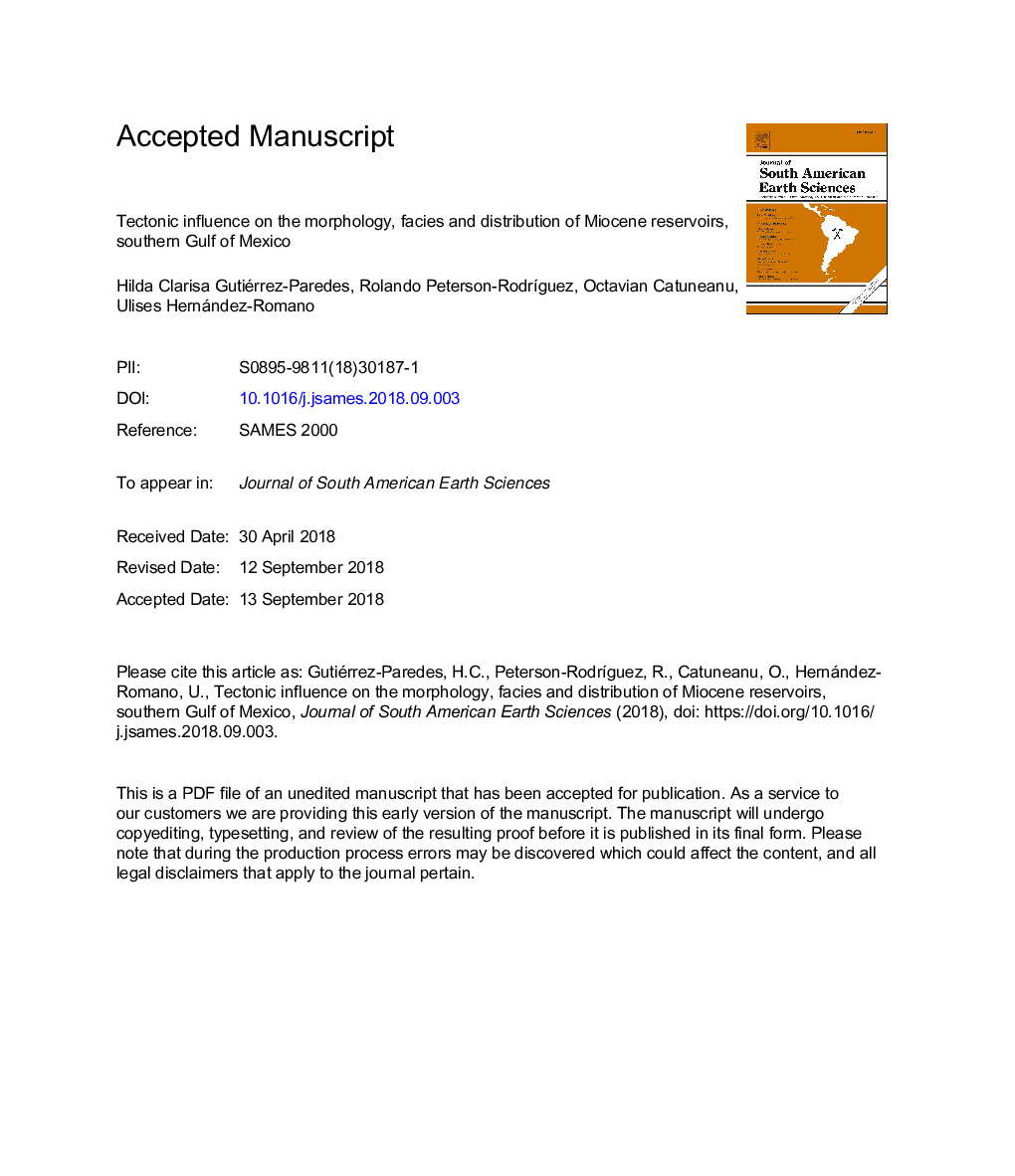| کد مقاله | کد نشریه | سال انتشار | مقاله انگلیسی | نسخه تمام متن |
|---|---|---|---|---|
| 11033119 | 1635123 | 2018 | 50 صفحه PDF | دانلود رایگان |
عنوان انگلیسی مقاله ISI
Tectonic influence on the morphology, facies and distribution of Miocene reservoirs, southern Gulf of Mexico
ترجمه فارسی عنوان
نفوذ تکتونیکی در مورفولوژی، رخساره ها و توزیع مخازن میوسن، خلیج مکزیک جنوبی
دانلود مقاله + سفارش ترجمه
دانلود مقاله ISI انگلیسی
رایگان برای ایرانیان
کلمات کلیدی
تنظیمات عمیق آب رویدادهای تغییر شکل هالوکاینز، پالئوتوپوگرافی، توزیع لبه، فضای محل اقامت،
موضوعات مرتبط
مهندسی و علوم پایه
علوم زمین و سیارات
علوم زمین و سیاره ای (عمومی)
چکیده انگلیسی
In the southern Gulf of Mexico, deepwater sediments were affected during deposition by contractional and extensional deformation events and halokinesis. The Miocene reservoirs in this area were deposited in slope and basinal settings during the falling-stage systems tracts and the lowstand systems tracts, where channel and frontal splay depositional elements were the most important. The integration of the structural analysis with seismic data, seismic attributes and isochron maps allows us to evaluate how the deformational events (especially the contractional event D3) controlled the distribution of sediments and the external geometry of their deposits. This interplay between deformation and sedimentation mainly occurred in two ways. First, the structural elements modified the paleobathymetry of the basin and created an accommodation space for clastic deposition. Second, the structural features controlled the entry of sediments. During the Oligocene and early Miocene, the depocenters were bounded by diapirs, salt sheets and structural highs formed by older salt anticlines. On the other hand, for the middle Miocene, the depocenters were controlled by the presence of folds in the southern part of the study area and by shortened diapirs and salt sheets in the periphery. The formation of these depocenters provided the accommodation space for sediment deposition; as a result, during the early and middle Miocene, the frontal splays were confined to these depocenters. At the end of the middle Miocene, these depocenters were filled, and channel levee systems and frontal splay complexes predominated. Finally, during the late Miocene, the depocenters formation was controlled by the extensional event, which provided the accommodation space for sediment deposition in half-grabens, where frontal splays complexes and channel levee systems were the most important depositional elements. All of these structural elements had significant implications for the architecture and internal organization of the turbidite systems.
ناشر
Database: Elsevier - ScienceDirect (ساینس دایرکت)
Journal: Journal of South American Earth Sciences - Volume 88, December 2018, Pages 399-414
Journal: Journal of South American Earth Sciences - Volume 88, December 2018, Pages 399-414
نویسندگان
Hilda Clarisa Gutiérrez-Paredes, Rolando Peterson-RodrÃguez, Octavian Catuneanu, Ulises Hernández-Romano,
